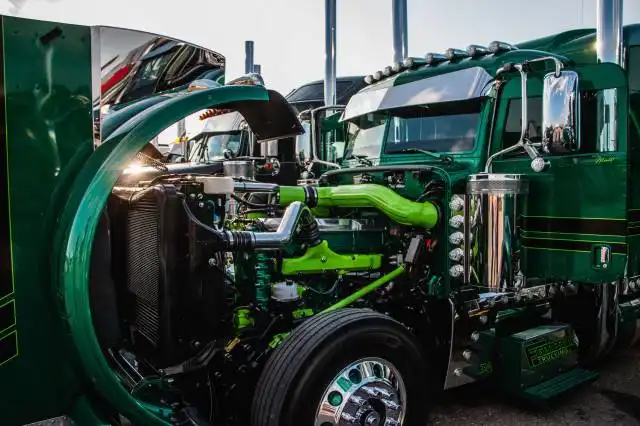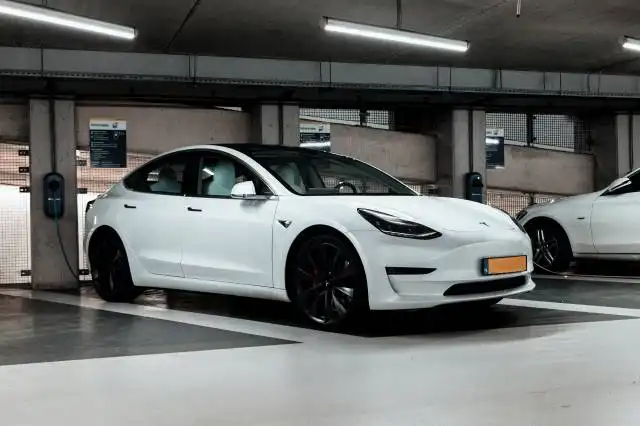Start a Car Dealership
Revving Up Your Entrepreneurial Journey: Navigate Success with a Car Dealership
| Updated


CAR DEALERSHIP
Hop into the fast lane with your very own car dealership, a business that's more thrilling than a high-octane race! This is your chance to race beyond the world of 9-to-5 monotony into a realm where shiny chrome and suave sales-talk reign supreme. A car dealership buys vehicles in bulk from manufacturers or at auction and resells them to the end customers while attempting to win at the high-stakes game of customer satisfaction and competitive pricing. So, fasten your seatbelt, switch gears, and let the journey of being an entrepreneur in the car dealership business ignite your way to financial success!
Jump to Business Plan
RELATED BUSINESS IDEAS
Browse ALL Cars & Transportation Solutions Business Ideas
Discover Your Perfect Domain
Unlock the door to your online success with our hand-picked selection of premium domain names. Whether you're starting a new venture or rebranding an existing one, the right domain can set the tone for your digital presence. Browse through our curated list, each with its unique potential to enhance your brand's visibility and credibility.
CAR DEALERSHIP MINI BUSINESS PLAN
This a quick reality check to help you identify the strengths and weaknesses of your business concept before you dive in.
Business Analysis: Car Dealership
Expected Percent Margin:
- Gross Margin: 13-15% (new cars), 14-16% (used cars)
- Net Profit Margin: 2-5%
Earnings Expectations:
- Daily Earnings: $1,000 - $5,000 (assuming selling 2 cars on an average per day and revenue of $500 - $2500 per car)
- Weekly Earnings: $7,000 - $35,000
- Monthly Earnings: $30,000 - $150,000
- Annual Earnings: $360,000 - $1,800,000
Actions to Hit Those Numbers:
Stock Management:
- Initial Investment: At least $500,000-$1,000,000 for inventory (new and used cars).
- Manufacturer Relations: Establish agreements with manufacturers for inventory supply and/or acquirement of franchise.
Marketing and Customer Acquisition:
- Digital Marketing: Develop active social media and digital platforms. Budget at least $2,000 per month for online campaigns.
- Local Advertising: Collaborate with local businesses or sponsor events to increase visibility.
Sales and Customer Experience:
- Sales Team: Employ a strong, experienced sales team and offer commissions to motivate them.
- Customer Service: Offer exceptional pre-sales and post-sales service to build brand loyalty.
Cost Control:
- Location: Secure a prime location with maximum visibility, but ensure rent/mortgage is less than 10% of expected monthly sales.
- Overheads: Budget for utilities, maintenance, salaries & commissions.
Business Operations:
- Operations Hours: Open at least 6 days a week, 10-12 hours a day.
- Transaction Volume: Aim to sell 1-2 cars per day at an average profit of $500-$2500 per vehicle.
Please note that these numbers are estimations and actual figures may vary based on location, client base, economic factors, and individual business decisions. Always seek professional financial advice for personalized strategies.
NOT WHAT YOU HAD IN MIND? Here are more ideas



Browse ALL Cars & Transportation Solutions Business Ideas
Grab Your Business Website Name
Before you get caught up in the whirlwind of setting up your business, invest in a domain name. It's a small but significant step that lays the foundation for your brand and makes it easier for customers to find and trust you. Just like you wouldn't build a house without securing the land first, don't build a business without securing your domain name.
"Why? Can't that wait?" Here's why it shouldn't
Step 1: Determine if the Business is Right for You
Breakdown of Startup Expenses
Before starting a car dealership, it is important to understand the startup costs associated with the business. These costs can include the cost of the dealership building, the cost of the inventory, the cost of the necessary equipment, and the cost of the necessary licenses and permits. Additionally, the cost of advertising and marketing should be taken into account. It is important to understand the total cost of starting a car dealership before making a decision to move forward.
Breakdown of Ongoing Expenses
In addition to the startup costs, it is important to understand the ongoing expenses associated with running a car dealership. These expenses can include the cost of the employees, the cost of the inventory, the cost of the necessary equipment, the cost of the necessary licenses and permits, the cost of advertising and marketing, and the cost of insurance. Understanding the total cost of running a car dealership is important in order to determine if the business is right for you.
Examples of Ways to Make Money
Once the startup and ongoing costs are understood, it is important to understand the ways to make money from a car dealership. The primary way to make money is through the sale of cars. Additionally, car dealerships can make money through the sale of parts and accessories, the sale of service contracts, and the sale of financing and insurance products. Understanding the ways to make money from a car dealership is important in order to determine if the business is right for you.
Step 2: Name the Business
When naming a car dealership, it is important to choose a name that is memorable and unique. It should also be easy to spell and pronounce. Additionally, it should be professional and reflect the values of the business. It is also a good idea to do a trademark search to make sure that the name is not already in use. It is also important to consider the domain name and make sure that it is available. It is also a good idea to create a logo to go along with the name. This can help create a brand identity and make the business more recognizable. Finally, it is important to make sure that the name is not offensive or inappropriate in any way.
Step 3: Obtain Licenses and Permits
In order to open a car dealership, you will need to obtain several licenses and permits from the local, state, and federal government. Depending on the state, you may need to obtain a dealer license, a salesperson license, and a business license. You may also need to obtain a special permit from the Department of Motor Vehicles (DMV) in order to sell cars. Additionally, you may need to obtain a license from the Federal Trade Commission (FTC) if you plan to advertise or market your dealership.
Insurance
You will also need to obtain insurance for your dealership. This includes liability insurance, which will protect you from any lawsuits that may arise from customers or employees. You may also need to obtain property insurance, which will cover any damage to your dealership or the vehicles you are selling. Additionally, you may need to obtain workers’ compensation insurance if you plan to hire employees.
Financing
You will need to obtain financing for your dealership. This could include a loan from a bank or other financial institution, or you could use your own savings. You may also need to obtain financing for the vehicles you are selling. This could include a loan from a bank or other financial institution, or you could use your own savings. Additionally, you may need to obtain financing from a manufacturer or wholesaler in order to purchase vehicles in bulk.
Step 4: Choose a Location
When choosing a location for a car dealership, there are several factors to consider. The first is the amount of traffic in the area. It is important to choose a location that is easily accessible to potential customers. Additionally, the location should be in an area with a good reputation and plenty of parking. It is also important to consider the competition in the area and the zoning regulations of the city or town. Finally, it is important to consider the cost of leasing or purchasing the property.
Benefits of a Good Location
Having a good location for a car dealership is essential for success. A good location can help draw in customers and increase sales. Additionally, having a good location can help to build a good reputation for the business. It can also help to create a positive image for the business and make it easier to attract potential customers. Finally, having a good location can help to reduce the cost of advertising and marketing, as customers will be more likely to find the business.
Step 5: Secure Financing
Securing financing is a critical step in starting a car dealership. There are several sources of financing available for entrepreneurs, including traditional bank loans, venture capital, and angel investors. Additionally, some car dealerships may be eligible for Small Business Administration (SBA) loans, which are government-backed loans with lower interest rates and more flexible terms. It is important to research all available financing options and compare the terms and conditions before deciding which option is best for the business.
Financial Planning
Financial planning is also an important part of the process of starting a car dealership. This includes creating a budget for startup costs, such as purchasing inventory, leasing or purchasing a building, and hiring staff. Additionally, it is important to create a budget for ongoing expenses, such as payroll, taxes, and insurance. It is also important to create a plan for how the business will generate revenue, such as through sales of cars, financing, and service contracts. Finally, it is important to create a plan for how the business will manage cash flow, such as through accounts receivable and accounts payable.
Step 6: Purchase Inventory
In order to start a car dealership, it is important to understand the types of inventory that will be necessary. This includes new cars, used cars, and parts. New cars will be the most expensive, but they will also be the most profitable. Used cars will be less expensive, but they will also be less profitable. Parts will be the least expensive, but they will also be the least profitable.
Sources of Inventory
Once the types of inventory are determined, it is important to find sources of inventory. New cars can be purchased from a manufacturer or a wholesaler. Used cars can be purchased from auctions, private sellers, or other dealerships. Parts can be purchased from wholesalers, manufacturers, or online retailers.
Financing Inventory
In order to purchase inventory, it is important to have the necessary financing. This can be done through a loan or through a line of credit. It is important to shop around for the best rates and terms before committing to a loan or line of credit.
Insurance
In order to protect the inventory, it is important to have the proper insurance. This includes liability insurance, property insurance, and inventory insurance. It is important to shop around for the best rates and coverage before committing to an insurance policy.
Step 7: Market the Business
Once the dealership is up and running, it is important to market the business. Advertising is key to success in the car dealership industry. There are a variety of strategies that can be used to advertise the dealership. These include traditional methods such as radio, television, and print ads, as well as digital methods such as online ads, social media, and email campaigns. It is important to develop an advertising strategy that is tailored to the target audience and that will reach the most people. Additionally, it is important to track the success of each strategy to ensure that the most effective methods are being used.
Networking
Networking is also an important part of marketing a car dealership. It is important to build relationships with other businesses in the industry, such as auto parts stores, mechanics, and other dealerships. These relationships can be beneficial in a variety of ways, such as providing access to a larger customer base, offering discounts on parts and services, and providing referrals. Additionally, networking can help to build a positive reputation for the dealership, which can help to attract more customers.
Promotional Events
Promotional events are also a great way to market a car dealership. These events can be used to attract new customers, as well as to build relationships with existing customers. Promotional events can include car shows, sales promotions, and customer appreciation events. It is important to ensure that these events are well-planned and well-executed in order to maximize their effectiveness.
Online Presence
Finally, it is important to have an online presence for the dealership. This includes having a website, as well as being active on social media. The website should include information about the dealership, such as the types of vehicles offered, the services provided, and contact information. Additionally, it should include a blog where customers can read about the latest news and updates. Social media is also important, as it allows the dealership to engage with customers and build relationships. It is important to ensure that the dealership’s online presence is professional and up-to-date in order to attract more customers.
Step 8: Hire Employees
When hiring employees for a car dealership, it is important to look for individuals who have a passion for cars and understand the industry. They should also have a good understanding of customer service and be able to work with customers in a professional manner. It is also important to look for employees who have a good understanding of the sales process and can help customers find the right car for their needs. Additionally, the employees should have a good understanding of the dealership’s inventory and be able to help customers find the right car for their needs.
Training
Once the right employees have been hired, it is important to provide them with the necessary training. This should include training on the dealership’s policies and procedures, as well as training on the sales process. Additionally, employees should be trained on how to properly handle customer inquiries and complaints. It is also important to provide employees with training on how to properly handle paperwork, such as contracts and other documents. Finally, employees should be trained on how to properly use the dealership’s computer systems and software.
Benefits
When hiring employees, it is important to provide them with the necessary benefits. This should include health insurance and other benefits that are standard in the industry. Additionally, it is important to provide employees with a competitive salary and other incentives that will help motivate them to do their best. Finally, it is important to provide employees with a safe and comfortable working environment.
Step 9: Monitor the Business
the Business Monitoring the business is essential to ensure that it is running smoothly and efficiently. It is important to keep track of sales, expenses, customer satisfaction, and other factors that can affect the success of the business. To monitor the business, owners should develop strategies such as:
- Tracking sales and expenses: Keeping track of sales and expenses is important to ensure that the business is profitable. Owners should track sales and expenses on a regular basis to ensure that the business is staying on track.
- Analyzing customer feedback: Customer feedback is an important tool for monitoring the success of the business. Owners should regularly review customer feedback and use it to make improvements to the business.
- Evaluating employee performance: Employee performance is another important factor in the success of the business. Owners should evaluate employee performance on a regular basis and make adjustments as needed.
- Keeping up with industry trends: It is important to stay up to date with industry trends in order to remain competitive. Owners should regularly review industry trends and adjust their strategies accordingly.
Benefits of Monitoring the Business
Monitoring the business is essential for the success of the business. It can help owners identify areas of improvement and make adjustments as needed. It can also help owners stay up to date with industry trends and remain competitive. Additionally, monitoring the business can help owners identify potential problems before they become too serious. Finally, monitoring the business can help owners make informed decisions and ensure that the business is running smoothly and efficiently.
EXPLORE MORE CATEGORIES
Browse ALL Business Idea Categories
TAKE THE NEXT STEPS










